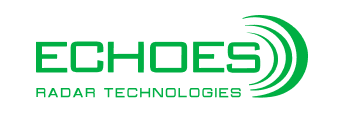Radar Processing
- Home
- Radar Processing
The high know how in the radar framework allows ECHOES to develop advanced radar signal simulation and processing tools.
The most part of our software is written in C language or already implemented on a FPGA board. This guarantees a full-portable software for every platform and a very high-speed processing, working at real-time or near real-time flows.
ECHOES can provide both compiled software with proprietary libraries and open-source codes. Customers are supported in all phases of the software development process, i.e. design, development, validation and documentation.
Here a list of developed algorithms that ECHOES has experience with:
- SAR processing:
SAR is a technique which overcomes the physical limits due to the size of a real antenna. With this technique, it is possible to increase the resolution of the radar in the cross-track direction up to a few centimeters by coherently summing returns from a virtual antenna with larger aperture. - ISAR processing: ISAR is a radar imaging technique which exploits the motion of the target to extract a high resolution electromagnetic bi-dimensional picture. This image can be used to detect several features on the target rather than a single detection for the whole target, as in conventional radar. The feature extraction process can be used also for Automatic Target Recognition purposes.
- Polarimetric InSAR /ISAR: SAR and ISAR processing can be enhanced with the addition of two techniques, Polarimetry and Interferometry. Polarimetry is able to exploit the different returns from the target, depending on the polarization of the transmitted signal, to extract more information regarding the electrical properties, shape and geometry. Interferometry exploits instead the phase difference between two or more channels in order to detect sub-centimeter changes in the target configuration or target coherence variations.
- Direction of Arrival: Direction of Arrival algorithms are enabled in phased-array or MIMO applications by leveraging signal reception across multiple antenna elements to determine a signal’s azimuth and/or elevation. This type of algorithm is commonly used in radar, communications, and electronic-warfare applications to determine the direction of jamming sources or of the desired signal source.
- Change Detection: Change Detection processing aims at detecting and quantifying variations in the target behavior such as orientation, composition and position. Applications can range from mine safety control, intrusion detection to structure fault monitoring among the others.
- STAP Processing: Space-Time Adaptive processing is a beamforming technique that can sensibly reduce the effect of clutter contamination or jammers in SAR imagery enhancing the quality of the results and permitting a more reliable detection even in bad Signal-to Clutter ratio.
- Weather radar data processing: Weather events can pose severe risks to public security and aviation due to floods and violent storms. Hazardous events are becoming more and more frequents. With radar data processing is possible to detect and classify threats such as hailstorms, wind shears and turbulence to provide reliable information to authorities in order to prepare adequate countermeasures.
Contact our engineering team today to discuss your application. We can develop a radar data processing toolbox for your needs.





